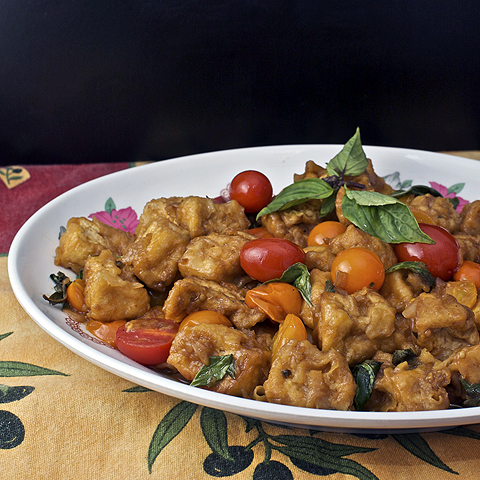Whether snickerdoodles got their name from German or are a result of New England whimsy, they are a popular cookie in the United States. Traditional snickerdoodles are a variety of sugar cookie that are rolled in a mixture of sugar and cinnamon before they are baked. My mother makes some that are excellent, perhaps not as popular in the family as her sugar cookies, but still mighty tasty. They are chewy and buttery and bursting with taste of cinnamon. As much as I like those traditional snickerdoodles, I wanted something a little different, something a splash of port or a dram of whiskey might accompany.
Mexican hot chocolate, for those who haven't had the pleasure of tasting it, is made with chocolate and cinnamon. That being the case, chocolate snickerdoodles seemed a logical mash-up. For anyone who has nibbled on a block of Ibbarra, these snickerdoodles will remind you of that moment of stolen pleasure. Crisp, deep chocolate flavor with a hint of heat and spice, these are a cookie for adults. Kids would probably love them as well, but it may lead them down a dark path. I'm not suggesting it will lead to heroin or stumbling out of midtown bars at 9 in the morning, but it will change them. They will suddenly find Barney and Rachel Ray too perky and upbeat. After eating these, they won't want those overly sweet, insipid store-bought cookies that they beg for like mutant dogs happy for some post-industrial chemical scrap made by indentured orphans in a pollutant spewing factory in a smog blackened city in northeast China. So it's up to you whether or not you share these with your children.
Mexican Chocolate Snickerdoodles
Cookie Dough
1 3/4 cups (8.75 oz) all-purpose flour
1 stick (4 oz) butter, at room temperature
2 oz unsweetened chocolate
1 egg, room temperature
1 cup sugar
1 tsp baking soda
1/2 tsp baking powder
1/2 tsp ancho chile powder
1/2 tsp cinnamon
2 cloves, finely ground
1/4 tsp salt
Sugar Coating
1/3 cup sugar
3/4 tsp cinnamon
1/4 tsp cayenne pepper
Preheat your oven to 400º F.
To make the cookie dough, melt the chocolate and allow to cool. Meanwhile, in a large mixing bowl cream the butter and sugar with a mixer until light and fluffy, about 5 minutes. Stir in the cooled chocolate and the egg and use the mixer to get a homogenous blend.
In a separate bowl, combine the flour and the remaining dry ingredients. Add this to the chocolate mixture in two or three stages, mixing well to make sure all the flour is incorporated into the batter.
Scoop out pieces of the dough and form approximately 1" balls.
In a small bowl, stir together the 1/3 cup sugar, the cinnamon, and the cayenne pepper. Make sure you mix these together well. Roll each ball of cookie dough in the sugar mix and place on parchment lined cookie sheets, spacing the cookies about 2 inches apart from each other. Using the bottom of a glass, a bottle of scotch, a saucer, or some other handy object with a flat plane, press down lightly on each ball of dough.
Place the cookie sheets in the preheated oven and bake for approximately 10 minutes. Slide the baked cookies onto racks to cool.
Pour a splash of port, a dram of Scotch, or even a glass of hazlenut flavored soy milk and realize how lucky you are and how grateful you should be for this moment, no matter how shitty the rest of your life may or may not be.


















































